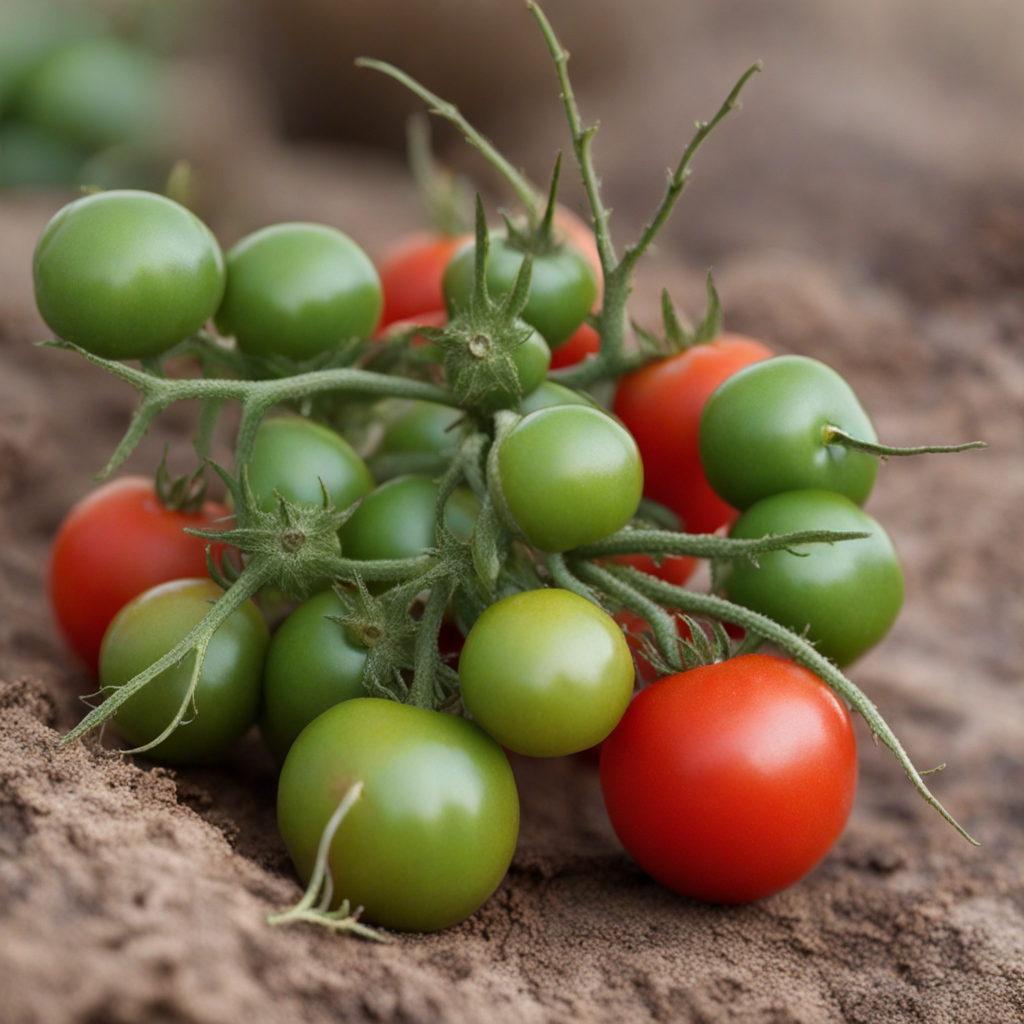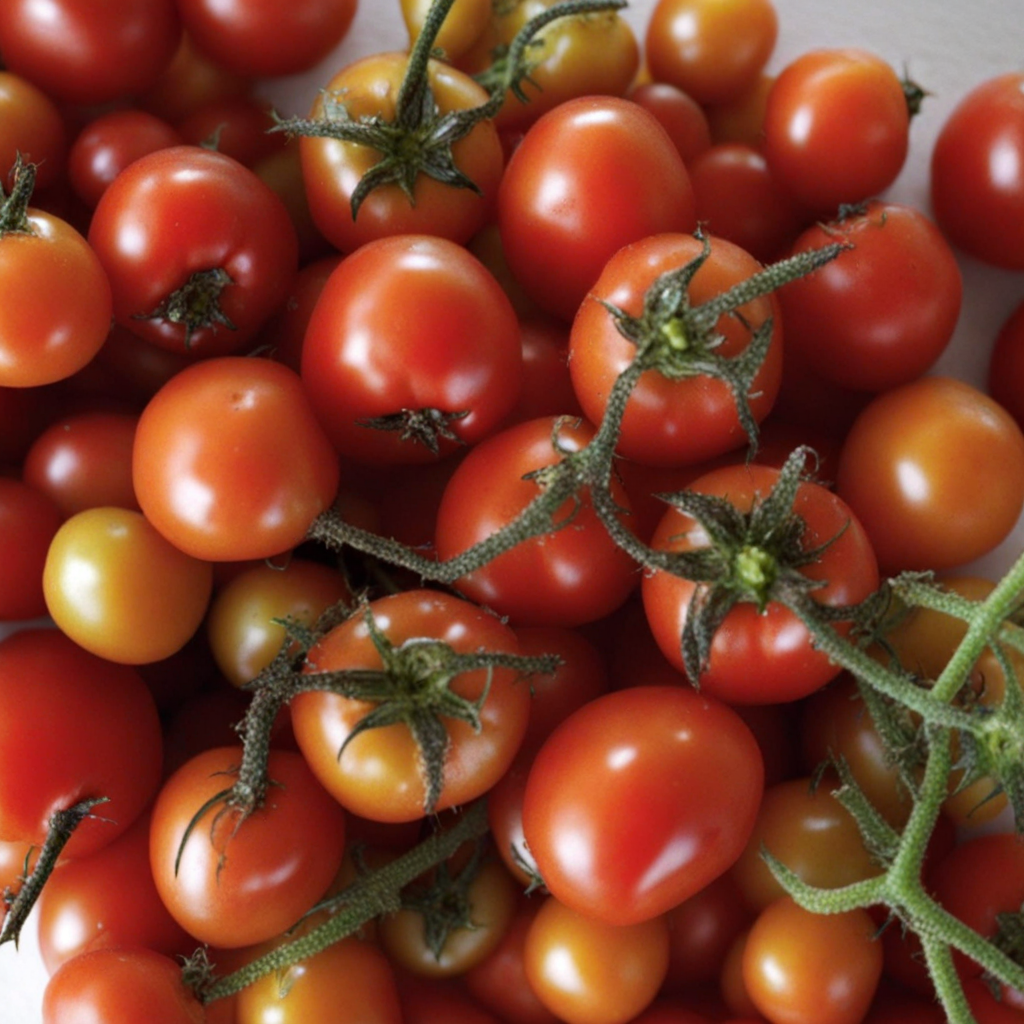Bush Tomato
Bush tomato, also known as desert raisin or solanum centrale, is a unique Australian native fruit that offers a remarkable taste experience. This small, round fruit, typically about the size of a marble, has a striking appearance with a brownish skin that resembles a shriveled tomato. Its flavor profile is complex, combining earthy, sweet, and slightly bitter notes, which can evoke a sense of nostalgia for sun-dried tomatoes while introducing a new layer of wildness. The taste is often described as savory, with hints of caramel and spice, making it a versatile ingredient in various culinary applications. In traditional Aboriginal cuisine, bush tomatoes were used in a variety of dishes, either fresh or dried. When dried, they take on a chewy texture and a concentrated flavor, making them perfect for sauces, chutneys, or as a seasoning for meats and vegetables. Their robust flavor pairs beautifully with other native ingredients like wattleseed and macadamia nuts, creating a fusion of tastes that tell the story of Australia's rich culinary heritage. Chefs today are increasingly incorporating bush tomatoes into modern dishes, showcasing their potential in both sweet and savory contexts. The bush tomato's unique flavor and cultural significance make it an exciting ingredient for food enthusiasts looking to expand their palates. Whether enjoyed in a gourmet restaurant dish or experimented with at home, this fruit invites a sense of adventure and discovery. It not only enhances the taste of a meal but also connects diners to the ancient traditions of Indigenous Australians, making each bite an exploration of history and flavor.
How It Became This Dish
The Bush Tomato: A Culinary Journey Through Australian History The bush tomato, known scientifically as *Solanum centrale*, is a small, round fruit indigenous to the arid regions of Australia. It holds a special place in the culinary landscape of the continent, particularly among Indigenous Australian communities who have utilized this unique plant for thousands of years. The bush tomato is not just a food source; it embodies a rich tapestry of cultural significance, traditional knowledge, and evolving culinary applications that highlight its importance in both past and contemporary Australian cuisine. Origins and Habitat The bush tomato is native to the central desert regions of Australia, thriving in the arid conditions of the Northern Territory, South Australia, and Western Australia. It is a perennial shrub that can grow up to 1 meter in height, characterized by its spiny stems and small, yellow flowers that eventually give way to the small, round fruits. These fruits, typically around 2-4 centimeters in diameter, ripen to a yellow or reddish hue and have a flavor profile that is often described as earthy, tangy, and slightly sweet, with a distinct bitterness that can be off-putting to some. Indigenous Australians have cultivated a deep relationship with the bush tomato, relying on it as a food source as well as a component of their cultural identity. The fruit was harvested mainly during the summer months, and traditional methods of gathering and processing were passed down through generations. Indigenous communities would often dry the bush tomatoes, which made them easier to store and transport, allowing them to be consumed throughout the year. This practice underscores the resourcefulness and adaptability of Indigenous peoples in utilizing the natural resources available to them in their environment. Cultural Significance For Indigenous Australians, the bush tomato is more than just a food item; it is imbued with cultural significance. The fruit is often featured in traditional stories and songs that reflect the deep connection between the land and the people. The plant is regarded as a symbol of survival and sustenance, representing the knowledge and practices that have been handed down over millennia. The harvesting of bush tomatoes is often a communal activity, fostering social bonds and cooperation among community members. The fruit is also associated with various traditional ceremonies and practices, further solidifying its role in the cultural fabric of Indigenous life. The use of bush tomatoes in traditional medicine, where they were used to treat various ailments, adds another layer to their cultural importance. European Encounter and Adaptation The arrival of European settlers in Australia brought significant changes to the landscape and the way food was perceived and consumed. Early colonial encounters with Indigenous food sources were often marked by misunderstanding and mistrust. Bush tomatoes, with their strong flavor and unique characteristics, were not immediately embraced by European settlers. Many regarded them as inedible or unappealing compared to the familiar fruits of their homeland. However, as the appreciation for native Australian ingredients began to grow in the late 20th century, bush tomatoes started to gain recognition beyond Indigenous communities. The burgeoning interest in bush food, driven by a desire for sustainable and locally sourced ingredients, led to a renewed interest in the bush tomato. Chefs and food enthusiasts began experimenting with the fruit in contemporary dishes, recognizing its potential to add depth and complexity to various culinary creations. Modern Culinary Applications Today, bush tomatoes are celebrated as a quintessential ingredient in modern Australian cuisine. Chefs are increasingly incorporating them into a variety of dishes, from savory to sweet, showcasing their versatility. The fruit can be used in sauces, jams, chutneys, and even desserts. Its distinctive flavor pairs well with meats, particularly game, and adds a unique twist to traditional recipes. The rise of the bush tomato in contemporary cooking is also tied to the broader movement of "bush tucker," which emphasizes the use of native Australian ingredients in gastronomy. This movement not only honors traditional Indigenous practices but also promotes sustainability by encouraging the use of local resources. Restaurants and culinary schools across Australia are now actively engaging with Indigenous food philosophies, integrating bush tomatoes into their menus and teaching aspiring chefs about the significance of native ingredients. Conservation and Future Prospects As interest in bush tomatoes continues to grow, there are challenges associated with their cultivation and availability. The plant is typically found in wild habitats and is not widely cultivated commercially. Efforts are being made to promote sustainable harvesting practices and encourage the cultivation of bush tomatoes in community gardens and agricultural projects, particularly in Indigenous communities. These initiatives aim to preserve traditional knowledge while ensuring the availability of bush tomatoes for future generations. In addition to culinary applications, bush tomatoes have potential benefits in the fields of nutrition and health. They are rich in antioxidants and have been studied for their potential medicinal properties. Ongoing research into the nutritional value of bush tomatoes could pave the way for their inclusion in health-focused products and diets, further enhancing their status as a superfood within Australian cuisine. Conclusion The bush tomato is a remarkable food that encapsulates the rich history and cultural significance of Indigenous Australians while also embodying the dynamic evolution of Australian cuisine. From its origins in the arid landscapes of the Australian outback to its resurgence in modern culinary practices, the bush tomato serves as a bridge between past and present, tradition and innovation. As we continue to explore the flavors and stories of this unique fruit, we honor not only its culinary potential but also the enduring legacy of the Indigenous peoples who have cherished it for generations. The bush tomato, with its earthy taste and cultural roots, stands as a testament to the resilience and adaptability of both the land and its people.
You may like
Discover local flavors from Australia







